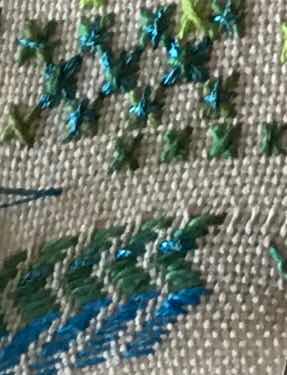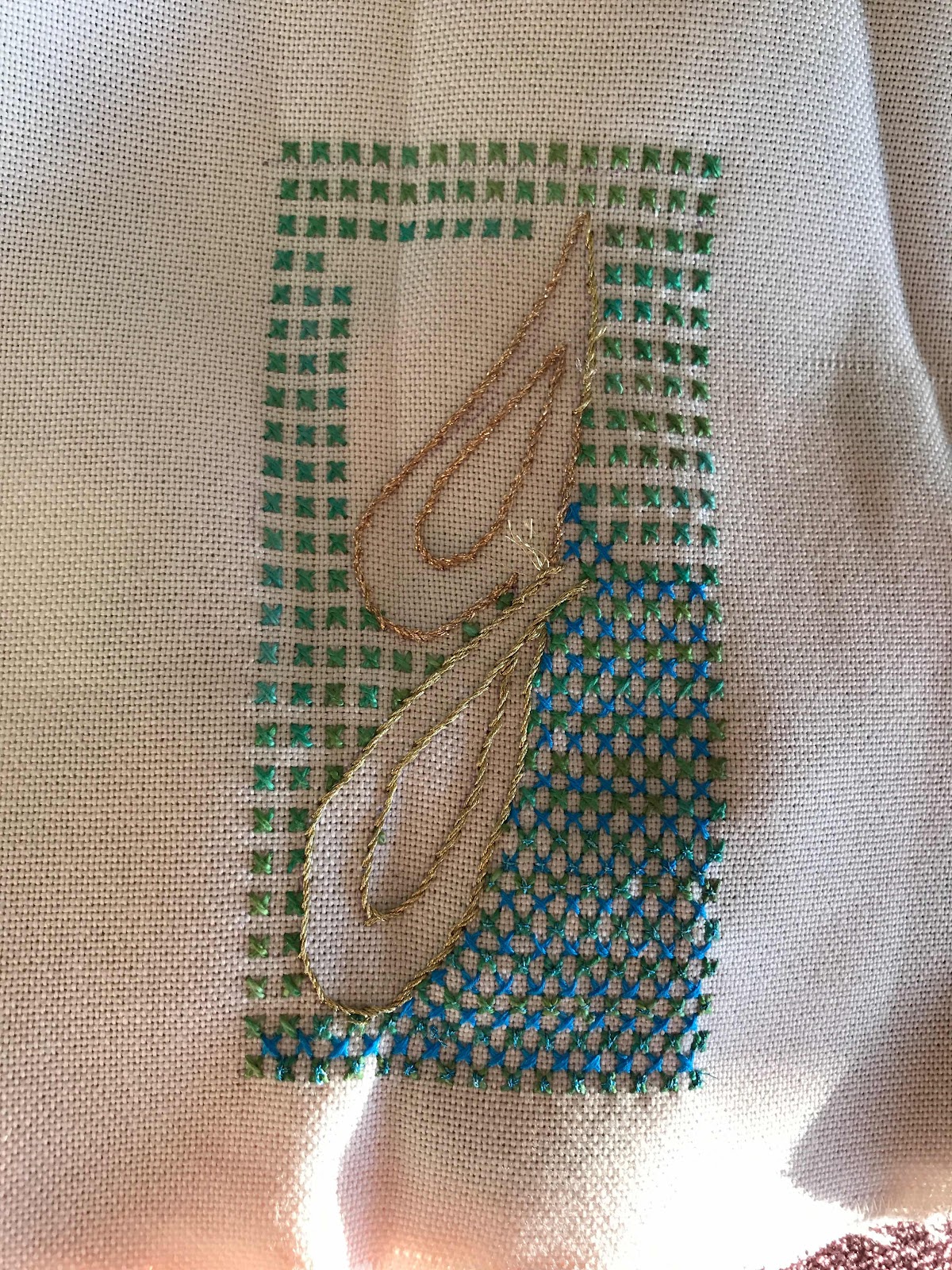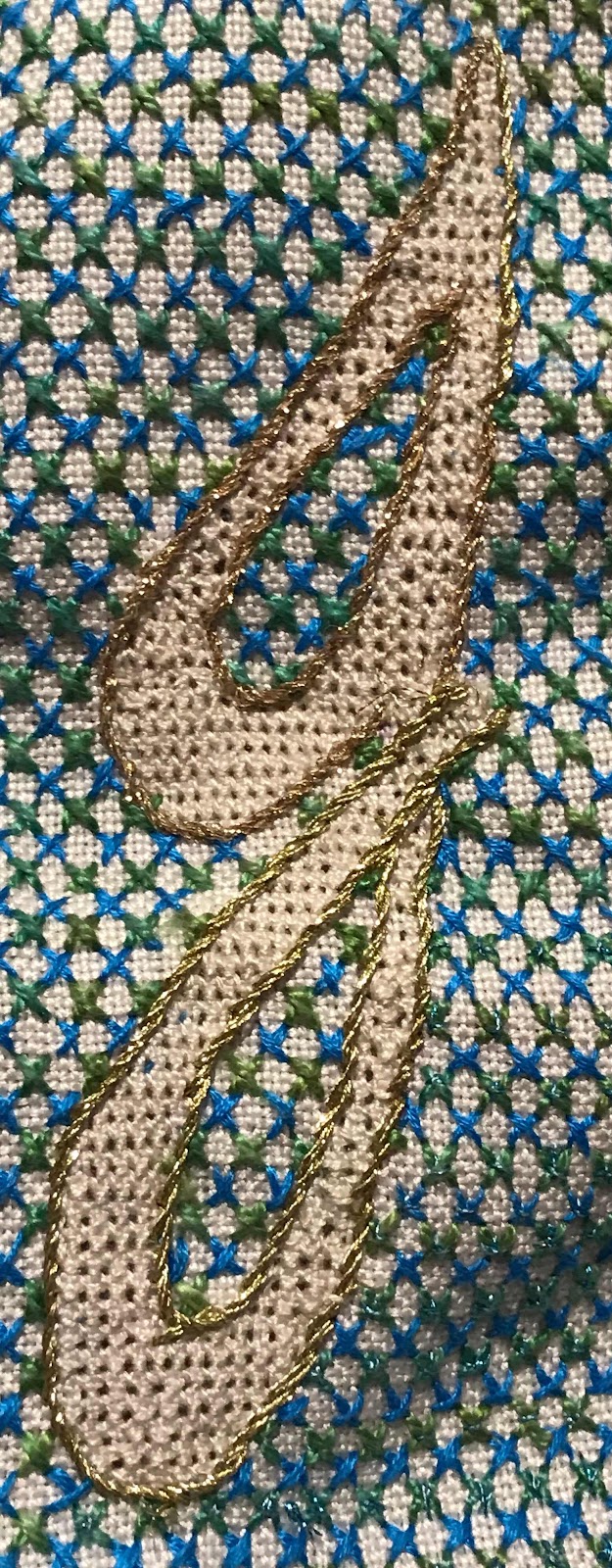The November Certificate Workshop focussed on Colbert embroidery, named for Jean Baptise Colbert, Finance Minister to Louis XIV, who introduced a lace making to France in the 17th Century in an attempt to kick-start an industry. Colbert is an embroidery style based on lace designs. Like Assisi work, it is a voided style, but encourages more elaborate backgrounds and combines both counted and surface stitchery.
The workshop was prepared by Carol Mullan, but unfortunately, Carol was ill on the day. We had her notes, and Mary Hall, who was attending as a student and had attended an earlier Colbert Workshop by Carol, stepped up and walked us through the workshop.

We began by sketching a curved shape which would become the void. I decided to use my initial. I was working on very open weave Lugana, about 25 count. From the threads I had brought along, chose a green perle 5, a stranded electric blue, a matching stranded metallic and a gold poly metallic.
I worked a tiny sample in a corner of the fabric. I was pleased to go against the Blue and green should never be seen without a colour in between mantra of my childhood!

I outlined my initial in the gold, then began to fill in the background using one of the stitch samples Carol had provided.
 It was a great workshop. Everyone rose to the challenge of making it work without Carol. It was bad enough that she was sick - we owed it to her to use what she'd provided to manage our own learning. Mary did an amazing job of helping us as did the Course coordinators.
It was a great workshop. Everyone rose to the challenge of making it work without Carol. It was bad enough that she was sick - we owed it to her to use what she'd provided to manage our own learning. Mary did an amazing job of helping us as did the Course coordinators.
The workshop was prepared by Carol Mullan, but unfortunately, Carol was ill on the day. We had her notes, and Mary Hall, who was attending as a student and had attended an earlier Colbert Workshop by Carol, stepped up and walked us through the workshop.
We began by sketching a curved shape which would become the void. I decided to use my initial. I was working on very open weave Lugana, about 25 count. From the threads I had brought along, chose a green perle 5, a stranded electric blue, a matching stranded metallic and a gold poly metallic.
I worked a tiny sample in a corner of the fabric. I was pleased to go against the Blue and green should never be seen without a colour in between mantra of my childhood!
I outlined my initial in the gold, then began to fill in the background using one of the stitch samples Carol had provided.
I had by now decided, of course, that I might as well use the whole piece of fabric to make a bag. I therefore worked another variety of the background stitches to cover the whole piece. For this I used some of my set of DMC Etoile thread - a soft stranded cotton with a touch of sparkle.
At this stage I blocked the piece to remove the bagginess created by the differing tensions.
I folded the piece, stitched a back seam and the bottom. I added a lining from some of the fabric I had left from my River Matters project . It's a mix of cultures, but the colours work well.
As a final touch I added cord endings from my button stash.
I'm not sure yet, what I will keep in this bag - but I'm very pleased with it and I'm sure something will turn up!
It is such a privilege to take part in these workshops. Thanks to all who made it possible.






